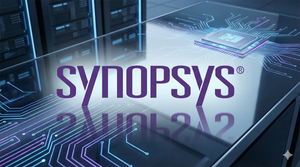AMSTERDAM - Sept. 10, 2022 - PRLog -- IBC 2022 — Network service providers (NSPs) — including cable providers, telcos and multi-service operators (MSOs) — have never had more options for ensuring high-speed access is delivered to connected home subscribers. A tremendous amount of progress has been made on the cable front with DOCSIS 3.1, as major breakthroughs are announced on a nearly daily basis on the gigabit passive optical network (GPON), and 5G fixed wireless access (FWA) front. The key question before the industry, however, is how they will mix and match these technologies in the connected home environment to deliver a seamless, high-performance experience to consumers around the world, says Mercedes Pastor, Senior Vice President of Global Customer Unit at VANTIVA, the brand that will replace the Technicolor corporate name at the end of September.
The variety of alternatives for operators has introduced a new level of complexity that will have to be managed from a strategic, operational and technological perspective.
"This is especially true for the growing number of NSPs that are mixing and matching multiple ultra-broadband technologies to meet the needs of subscribers who find themselves in different geographic and topographic environments. It creates an interesting dilemma — how and when NSP leaders should choose the best broadband technologies," says Pastor.
The 10G Dilemma in the Eurasian Market
While the general Eurasian market has extensive 1G coverage — and 2.5G connectivity is beginning to gain traction — the eventual goal of 10G will require multiple technologies and multiple offerings to co-exist together to cover residential, enterprise, and wholesale markets.
"In recent years — especially through the pandemic — the industry has demonstrated a high level of creativity in selecting a broad array of high-speed access technologies to meet the expectations of a digitally dependent society. It was not that long ago that broadband access services offered to subscribers were driven by the category of service providers from which services were delivered," recalls Pastor.
Cable operators offered coaxial-based services that have evolved under the DOCSIS standards. Telcos offered digital subscriber line (XDSL) or fiber-to-the-home, depending on the infrastructure that was available. Dish-based operators offered satellite connectivity.
"Today, the lines of distinction that determine what broadband access technologies are offered by different segments of the provider community are blurring. Cable operators are exploring the potential of GPON while the standards community in RDK-B is extending the functionality of their standard beyond cable operators. And everybody is in a position to leverage 5G FWA to fill in gaps that cannot be addressed effectively by conventional terrestrial networks. It is forcing NSPs to develop a broader set of skills," says Pastor.
There are a couple of reasons for this.
- Consumer behavior. The pandemic lockdowns resulted in a huge shift to work from home. This has had a tremendous impact on how NSPs strategize and manage their business objectives.
"In 2020, we saw broadband consumption in the home shoot up by 60% per person from the pre-pandemic period. More recent reports suggest consumer consumption has in 2022 reached 71% per person from the pre-pandemic. This confirms we are living in the new normal and that NSPs will need to continue delivering highly reliable high-speed connectivity to the home," notes Pastor.
- Cost. Now that all major broadband technologies (cable, fiber and 5G FWA) are on the table for all classes of service providers, each NSP will have to engage in a careful analysis of what technologies fit best — from a cost and performance perspective — in complex and dynamic market conditions.
"This is changing how investments are planned and implemented to upgrade NSP networks that need to handle future 10G (or at least high-speed) requirements," explains Pastor.
Prioritizing 10G Connectivity to Connected Homes Across Eurasia
While there is no single answer that will be right for all operators, market demographics, population densities and terrain will help to dictate many decisions. That said, many operators will eventually pursue a hybrid path to 10G.
This is because multiple access technologies can provide consumers with ultra-broadband speeds. Cable operators, for instance, will deploy DOCSIS 4.0 while telcos continue to make advances with GPON technologies.
"Both cable and telco NSPs are beginning to embrace 5G FWA to complement their existing networks and rapidly expand into new markets. However, 5G FWA is also opening the door for new disruptive players to enter the broadband-connected home market — even if they lack an extensive fiber or cable infrastructure," says Pastor.
Interesting work is being done to integrate terrestrial broadband access with 5G FWA to provide enhanced, super-fast experiences to consumers. This combination of technologies will truly accelerate and maximize the addressable market for bandwidth-intensive applications — such as healthcare, gaming, augmented reality and immersive education.
"We expect 5G to be complementary to fiber deployments in rural low-density areas throughout Eurasia," states Pastor.
"At VANTIVA, we will continue to build on the heritage of excellence that has been established under the Technicolor Connected Home brand. We are delivering the next generation of CPE to support the new generation of bandwidth-intensive services to the home regardless of how NSPs need to mix and match the use of broadband access technologies (DOCSIS, GPON, 5G, etc.). There has never been a more exciting time to be in the connected home business," concludes Pastor.
[Editor's Note: To read the full Q&A interview with VANTIVA's Mercedes Pastor, visit: https://bit.ly/VANTIVA_10G-Dilemma]
Photos: (Click photo to enlarge)


Read Full Story - IBC 2022: Open CPE Technology Addresses The 10G Dilemma and Prepares Eurasian NSPs to Address a Broad Array of Broadband Access Options | More news from this source
Press release distribution by PRLog





